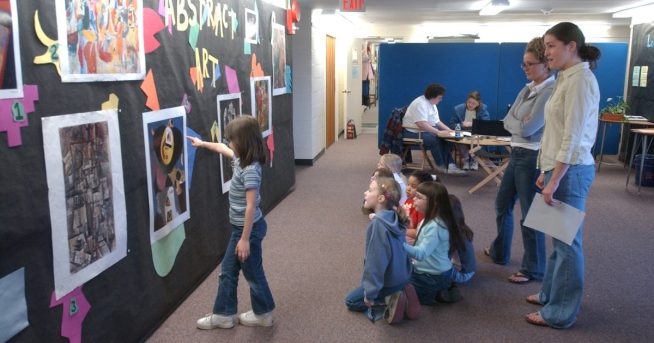I’ve found that much of the advice aimed at children is just as helpful for me.
For instance, I’m reading Nicole Malenfant’s Routines and Transitions: A Guide for Early Childhood Professionals (non sequitur: a surprising name for a childhood expert). She lays out several strategies for teachers to use in establishing routines and transitions for children. I’m going to try to apply them to myself.
Here’s a tips list, loosely adapted:
1. Turn routines into games. My evening tidy-up, while not quite a “game,” is kind of fun and quite relaxing.
2. Control the level of noise. I’m much calmer when there’s no TV or music playing in the background. (Except at night. Weirdly, my husband and I fall asleep to all-news radio.)
3. Organize space so it’s attractive, well organized, and well lit. One of my most important Secrets of Adulthood:
Outer order contributes to inner calm.
@GretchenRubin (Click to Tweet!)
4. Plan times each day for relaxing activities. Why is this so hard for adults?
5. Encourage a feeling of belonging (e.g., by displaying children’s work and pictures).
6. Consider children’s reactions when making an unavoidable change. I do better with routines and predictability. I don’t react well when there’s a sudden change in the schedule.
7. Balance indoor and outdoor activities. Just going outside into the sunlight gives a mood boost.
8. Make sure there’s plenty of time to get things done without rushing. This makes a huge difference in my day-to-day happiness. In Happier at Home, I write a lot about my struggle to create an unhurried atmosphere at home.
9. Provide opportunities for curiosity and creativity.
10. Speak in a calm voice. This is a big issue in my home. We talk all the time about “a kind voice” and “a mean voice.”
11. Explain the behavior you’d like to see in a clear, respectful way. Not “Settle down,” but “Sit in your chair with your feet under your desk.” Not “I could use a little help around here,” but “Please unload the dishwasher so we can get the dirty dishes out of the sink.”
12. Meet people’s basic needs. Children and adults need to eat, drink, go to the bathroom, rest, and spend time outside.
It’s such a cliché to say “I learned everything I need to know in kindergarten,” but I find that, sometimes, the most basic ideas are quite effective.
What would you add to this list? What lessons from nursery school?
Gretchen Rubin is the author of the #1 New York Times Bestseller The Happiness Project—an account of the year she spent test-driving the wisdom of the ages, current scientific studies, and lessons from popular culture about how to be happier—and the recently released Happier at Home. On her popular blog, The Happiness Project, she reports on her daily adventures in the pursuit of happiness. For more doses of happiness and other happenings, follow Gretchen on Facebook and Twitter.
BUY GRETCHEN’S LATEST BOOK:
*Image courtesy of ijiwaru jimbo.












